Celebrating Diversity is a Here for the Girls blog series on diversity, equity, and inclusion related to the H4TG mission: to improve the lives of young women affected by breast cancer.

June is LGBTQ+ Pride Month! Being an ally to the community is an important part of celebrating the month – but sometimes it’s hard to know exactly how to be an ally. Or maybe we are trying to do so, but we are interested in learning more about what allyship really means and how to be better at it. That’s ok! Start where you are and move forward from there. Get knowledge and have conversations. It’s how we all grow!
Read on for some thoughts on being an LGBTQ+ ally along with some of the challenges members of the community face when it comes to cancer care in particular.
How To Be An Ally To The LGBTQ+ Community
An ally is someone who supports equal civil rights, gender equality, and the LGBTQ+ social movement, and challenges homophobia, biphobia, and transphobia.
The LGBTQ center at UNC Chapel Hill has a great list of the qualities of an ally (see their list below or read more on their website). If there are ideas or concepts on the list that aren’t clear, a great place to start is looking up definitions online or talking to someone who knows. Don’t be afraid to learn more! According to the LGBTQ+ center at UNC Chapel Hill, here are a few traits of allies (see their website HERE for the full list):
- Allies work to develop an understanding of sexual orientation, heterosexism, and the challenges facing gay, lesbian, bisexual and transgender people.
- Have a good understanding of sexual orientation, gender identity, and gender expression; and are comfortable with their own.
- Are committed to continuing personal growth (even when that involves discomfort).
- Expect to make some mistakes but do not use it as an excuse for non-action.
- Know that in empowered ally relationships, the persons in the non-oppressed role initiate the change toward personal, institutional, and societal justice and equality.
- Are aware of the coming-out process and realize that it is not a one-time event. The coming-out process is unique to gay, lesbian and bisexual, and transgender people and brings challenges that are not often readily understood.
- Understand that gay, lesbian and bisexual people receive the same message about homosexuality, bisexuality, and trans identities as everyone else. Thus gay, lesbian bisexual, and transgender people deal with internalized homophobia, heterosexism and transphobia. It is important to recognize the risks of coming out and to challenge the internal oppression.
- Remember that LGBTQ+ identified folks are a diverse group. Each community within the larger LGBTQ+ communities has unique needs, challenges, and goals.
LEARN MORE: Check out this great Pride Month reading list from the Human Rights Campaign!
How does being in the LGBTQ+ community affect cancer outcomes?
H4TG is an organization that provides social-emotional support for young women affected by breast cancer; we recognize that sexual orientation and gender identity can have a significant impact on the well-being of members of the LGBTQ+ community who have this disease.
According to the national nonprofit CancerCare, the care an LGBTQ+ person receives can be impacted by health care disparities, which are differences in adequate and appropriate care for marginalized or socially excluded people based on either implicit or explicit biases against them.
Here are some challenges when it comes to cancer care and screening, according to CancerCare (read more on their website, including how to advocate for yourself if you are part of the LGBTQ+ community):
- LGBTQ+ patients may delay routine check-ups, screenings and other early detection exams. Missing these can lead to cancer being diagnosed at later stages when cancer is harder to treat. Individuals may also not feel safe sharing information that a provider might need for proper care. Some patients may feel traumatized or be refused treatment completely. Reduced medical options can multiply the stress of their diagnosis.
- Doctors may hold implicit biases in care. They may simply not be aware of differences in health care needs and realities. This affects the types of screening that are recommended.
- A transgender person might retain aspects of their biological sex that require certain forms of care. A trans man may need care from a gynecologist or continued breast exams. A trans woman may require care from a proctologist. Many health care systems still rely on male-female binaries, potentially making non-binary or gender nonconforming patients feel invisible.
Read more about these and other healthcare disparities on the CancerCare website HERE.
LEARN MORE: Women who identify as lesbian, gay, or bisexual (LGB) have less access to care after cancer treatment compared to heterosexual women. Learn more about why these women receive less post cancer treatment than anyone else in an in-depth article on recent research HERE.
